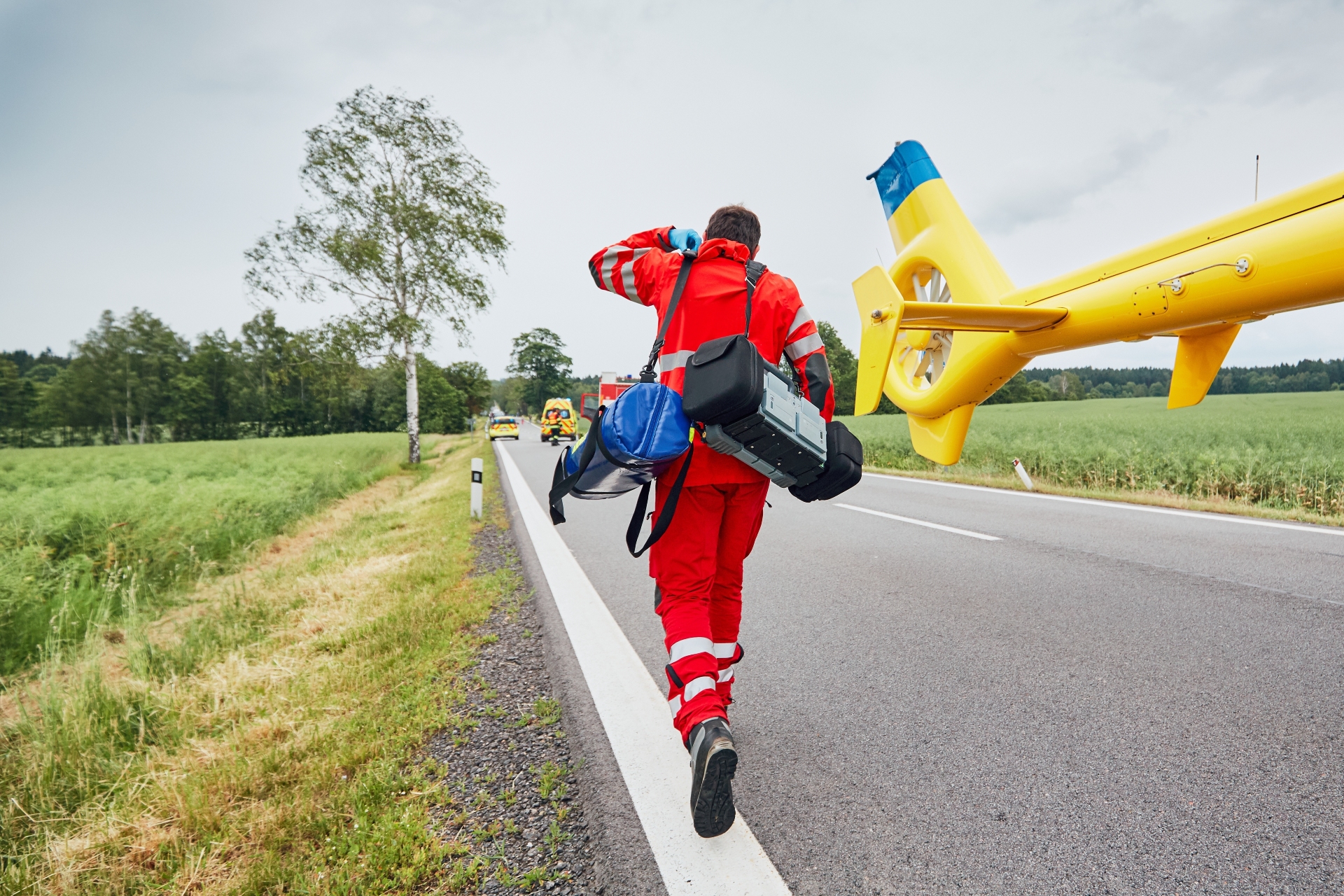Trauma Overview part 1
 When dealing with a trauma patient, there can be numerous additional considerations and challenges that must be dealt with when compared to medical cases:
When dealing with a trauma patient, there can be numerous additional considerations and challenges that must be dealt with when compared to medical cases:
- Safety is always an important element that should be considered at every job. Within a trauma scenario, further considerations to safety may be needed. For example where there may have been a Road Traffic Collision (RTC), an accident within the home, an assault, etc, an element of scene management and safety will need to be considered. It is no good if you become a casualty on scene, therefore, consider correct Personal Protective Equipment (PPE), what further resources you may require such as Police, Fire and Rescue Service (FRS), Hazardous Area Response Team (HART), etc. Are there risk factors that require you to stand off from the address, or do you need to manage the scene before looking at treating patients.
- The pathophysiology of trauma is different to that of medical events. In trauma, as described, it is due to a physical event, where the patient may have otherwise been healthy prior to the injury. Treatment of trauma requires quick management of the immediate deficits to reduce the damage caused. Surrounding traumatic pathophysiology also need to be considered and dealt with, such as the correlation between the lethal trauma triad of Hypothermia, Acidosis, and Coagulopathy.
- Not only will pathophysiology be different, but treatment in some circumstances will follow trauma specific pathways, such as use of catastrophic tourniquets, haemostatic gauze, Tranexamic Acid (TXA) within major haemorrhage, spinal immobilisation and extrication for where there is a spinal injury suspected, burns management including the cooling of burns and fluid administration when indicated, decompression of a tension pneumothorax through needle chest decompression, and so on. These are just some of the many additional trauma treatments that need to be considered. A patient may also present in a poly-trauma state with multiple injuries and pathophysiology occurring at once.
- The Mechanism Of Injury (MOI) and surrounding factors need to be considered when assessing the potential harm to the patient. MOI and surrounding factors can help you in deciding what treatment the patient may need, whether you transport them to a Major Trauma Centre (MTC), whether you need more advanced medical care on scene, and how urgent you need to extricate them to hospital. A patient who is walking around following a high impact RTC may seem fine, but internally there may be a range of injuries which would cause eventual harm and potential death.
- Following a major trauma event, you may have to decide whether a patient goes to a MTC for their treatment and care, meaning you may have to bypass other Hospitals. Different Ambulance Services will have different policies, procedures, and guidelines in place for what patients should be referred to a MTC.